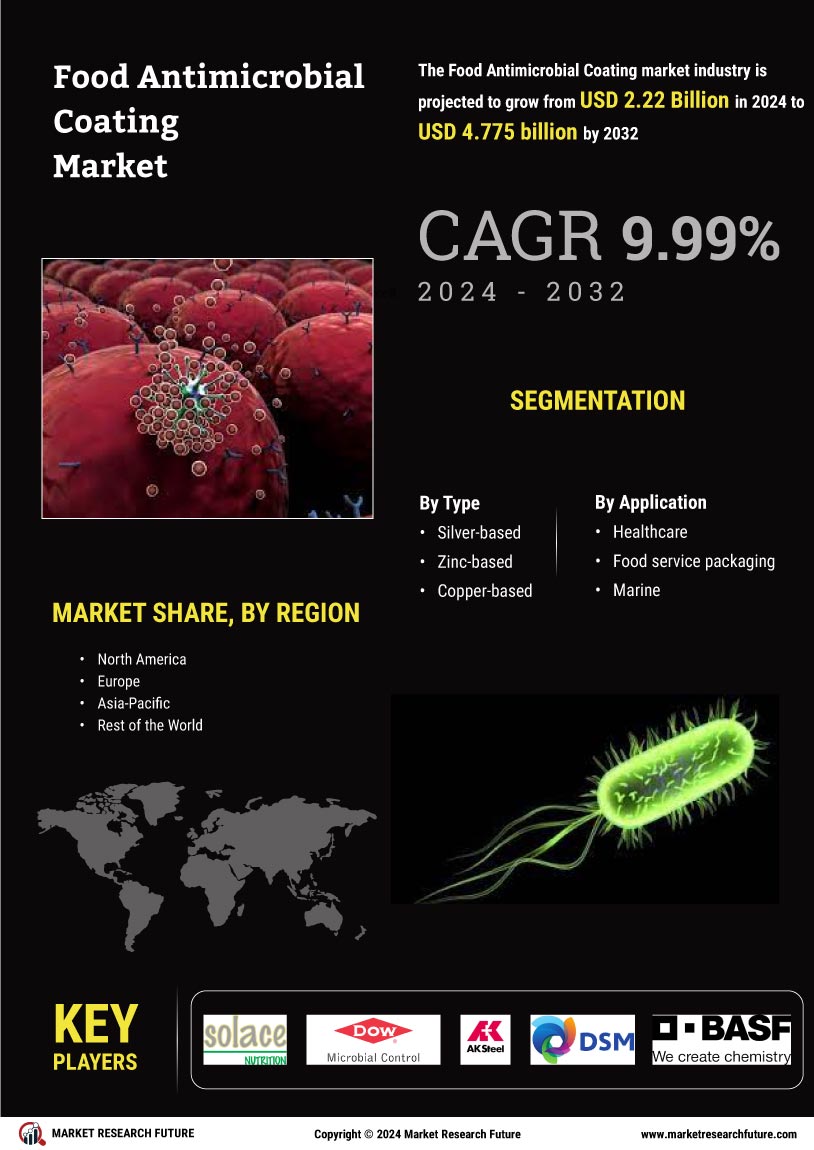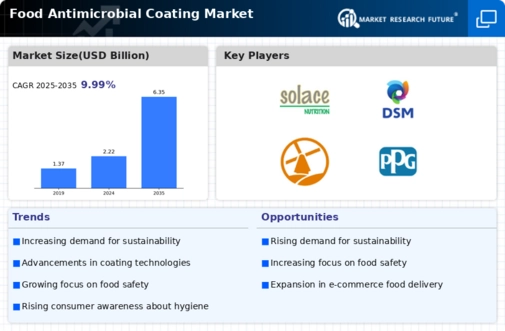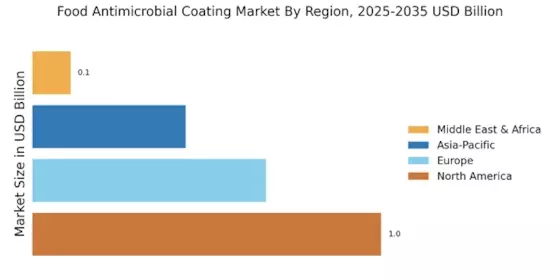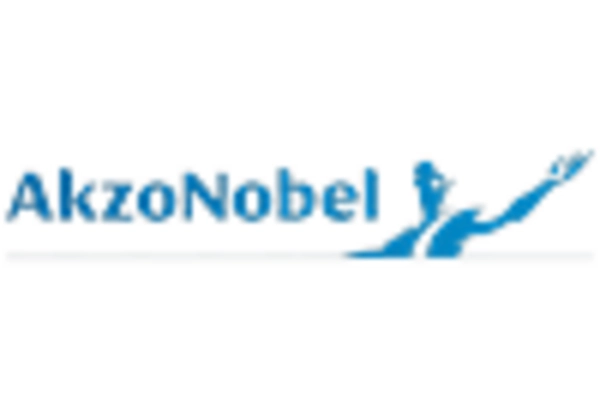Growth in the Packaged Food Sector
The expansion of the packaged food sector is a significant driver for the Food Antimicrobial Coating Market. As consumers increasingly opt for convenience and ready-to-eat meals, the demand for effective preservation methods has surged. Antimicrobial coatings play a crucial role in extending the shelf life of packaged foods by inhibiting microbial growth. Recent statistics indicate that the packaged food market is expected to reach a valuation of over 3 trillion dollars by 2026, reflecting a substantial opportunity for the Food Antimicrobial Coating Market. This growth is likely to encourage manufacturers to adopt innovative coating technologies that enhance product safety and quality, thereby meeting consumer expectations.
Rising Consumer Awareness of Food Safety
The increasing consumer awareness regarding food safety is a pivotal driver for the Food Antimicrobial Coating Market. As consumers become more informed about foodborne illnesses and their potential health impacts, the demand for products that ensure food safety rises. This heightened awareness has led to a growing preference for food products that utilize antimicrobial coatings, which can significantly reduce microbial contamination. According to recent data, the food safety market is projected to grow at a compound annual growth rate of approximately 7% over the next few years. This trend indicates a robust opportunity for the Food Antimicrobial Coating Market, as manufacturers seek to enhance the safety and shelf life of their products through innovative coating solutions.
Regulatory Support for Food Safety Standards
Regulatory bodies worldwide are increasingly implementing stringent food safety standards, which serve as a catalyst for the Food Antimicrobial Coating Market. These regulations often mandate the use of antimicrobial solutions in food packaging and processing to mitigate the risk of contamination. For instance, the Food and Drug Administration has established guidelines that encourage the adoption of antimicrobial coatings in food applications. This regulatory support not only enhances consumer confidence but also compels manufacturers to invest in advanced antimicrobial technologies. As a result, the Food Antimicrobial Coating Market is likely to experience growth driven by compliance with these evolving standards, which aim to protect public health and ensure food quality.
Technological Advancements in Coating Solutions
Technological advancements in coating solutions are transforming the Food Antimicrobial Coating Market. Innovations such as nanotechnology and bio-based coatings are emerging, offering enhanced efficacy against a broad spectrum of pathogens. These advancements not only improve the performance of antimicrobial coatings but also align with the growing consumer preference for sustainable and environmentally friendly products. The integration of smart technologies, such as sensors that monitor microbial activity, is also gaining traction. As these technologies evolve, they are expected to drive the Food Antimicrobial Coating Market forward, providing manufacturers with the tools to develop more effective and sustainable solutions for food preservation.
Increasing Demand for Natural Antimicrobial Agents
The rising demand for natural antimicrobial agents is reshaping the Food Antimicrobial Coating Market. Consumers are increasingly seeking products that are free from synthetic chemicals, prompting manufacturers to explore natural alternatives such as essential oils and plant extracts. This shift towards natural ingredients not only caters to health-conscious consumers but also aligns with the broader trend of clean labeling in the food industry. Market Research Future indicates that the natural food preservatives segment is projected to grow significantly, suggesting a favorable environment for the Food Antimicrobial Coating Market. As manufacturers adapt to these preferences, the incorporation of natural antimicrobial agents is likely to become a key differentiator in product offerings.


















Leave a Comment